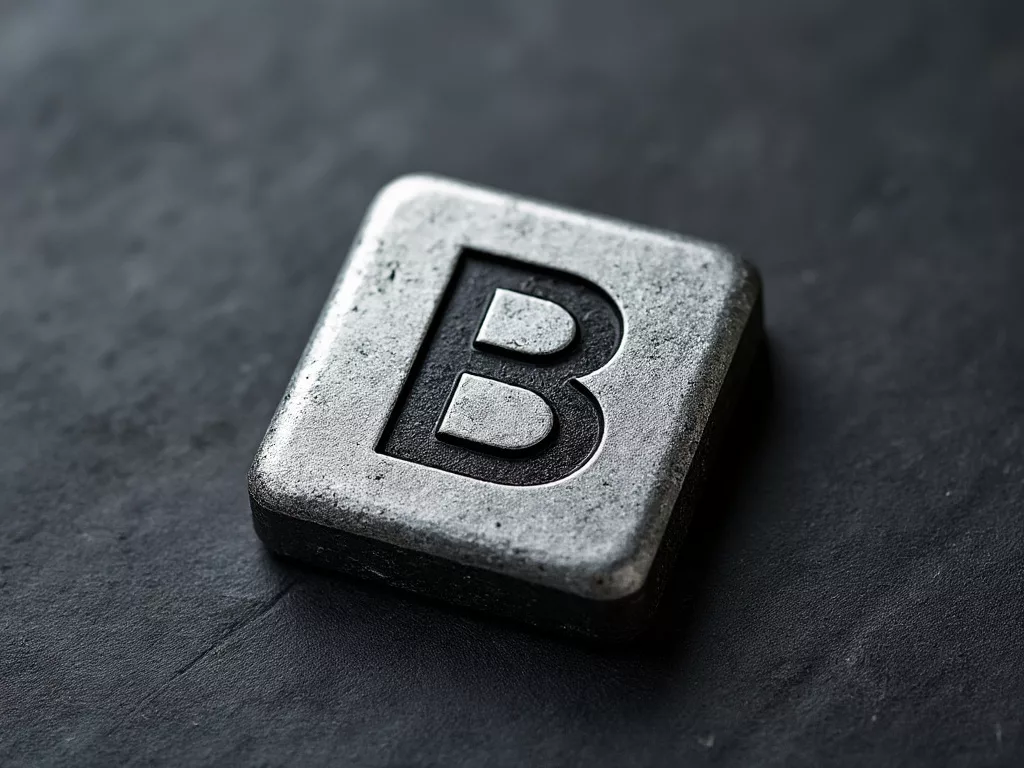Boron, with the atomic number 5 and symbol B, is a unique element found in Group 13 of the periodic table. Known for its ability to form complex compounds, Boron has an atomic mass of approximately 10.81 u. Despite its scarcity in Earth’s crust, Boron plays a crucial role in various industrial, medical, and everyday applications.
Table of Contents
What is Boron?
Boron is a metalloid, which means it has properties of both metals and non-metals. This element does not naturally occur free in nature but is found combined in borates and other minerals. Its electron configuration is [He] 2s² 2p¹, making it quite versatile in chemical bonding.
Boron was first isolated in 1808 by French chemists Joseph Louis Gay-Lussac and Louis Jacques Thénard, and independently by Sir Humphry Davy, each using different methods involving the reduction of boric acid.
Where is Boron Found?
Most of the world’s Boron comes from borax deposits, with significant sources located in Turkey, the United States, Argentina, and Russia. The largest borax deposit, often mined, is the Boron deposit in California, USA. By far the most important source of boron is rasorite. This is also found in the Mojave Desert in California, USA. Boron minerals are also found in evaporated ancient lake and sea beds where borate minerals have precipitated.
Applications of Boron
- Glass and Ceramics: Boron compounds like borax are used in the manufacture of glass, especially heat-resistant borosilicate glass, known for its durability and resistance to thermal shock.
- Agriculture: Boron is an essential micronutrient for plants, aiding in cell wall formation, seed and fruit development, and sugar transport. Deficiency in boron can lead to significant growth issues in plants.
- Nuclear Industry: Boron is used in control rods for nuclear reactors because of its ability to absorb neutrons without forming long-lived radionuclides.
- Medicine: Boron neutron capture therapy (BNCT) is an experimental form of radiotherapy for cancer treatment. Boron-containing compounds are also used in pharmaceuticals for their antifungal properties.
- Boron Fibers: Extremely strong yet lightweight, boron fibers are used in high-performance composites for aerospace applications.
- Clean Energy: Boron is also being researched for its potential in creating high-energy-density fuels and as a component in hydrogen storage materials.
Also see: Rare Soft Metal Indium
Physical Properties of Boron
Boron in its crystalline form is black, but it’s usually seen as a brown powder when amorphous. It’s hard, brittle, and poor conductor of electricity at room temperature but becomes a good conductor at high temperatures.
Chemical Properties of Boron
Boron is highly resistant to oxygenation at normal temperatures, giving it good corrosion resistance. It forms numerous compounds, especially borates, due to its electron-deficient nature, which leads to complex molecular structures.
Interesting Facts About Boron
- Colorful Flames: When burned, certain boron compounds can produce a bright green flame, a property utilized in pyrotechnics for vivid displays.
- Mars Hypothesis: Scientists speculate that boron might have played a role in the early chemistry leading to life on Earth. There’s interest in exploring boron compounds on Mars, where they might hint at past habitability.
- Elemental Rarity: Despite its importance, boron is relatively rare, making up only about 0.001% of Earth’s crust.
- Boron in Technology: Boron doping in silicon is critical for the semiconductor industry, enhancing the conductivity of silicon chips.
- Health: While too much boron can be harmful, in trace amounts, it’s beneficial for bone health, potentially reducing the risk of osteoporosis.
Conclusion
Boron might not be as famous as other elements like gold, silver or oxygen, but its impact on technology, health, and industry is profound. From making our screens possible through semiconductors to preventing plant diseases in agriculture, boron’s applications are both diverse and essential. Its unique chemical properties allow for its use in specialized fields like nuclear energy and advanced materials.























